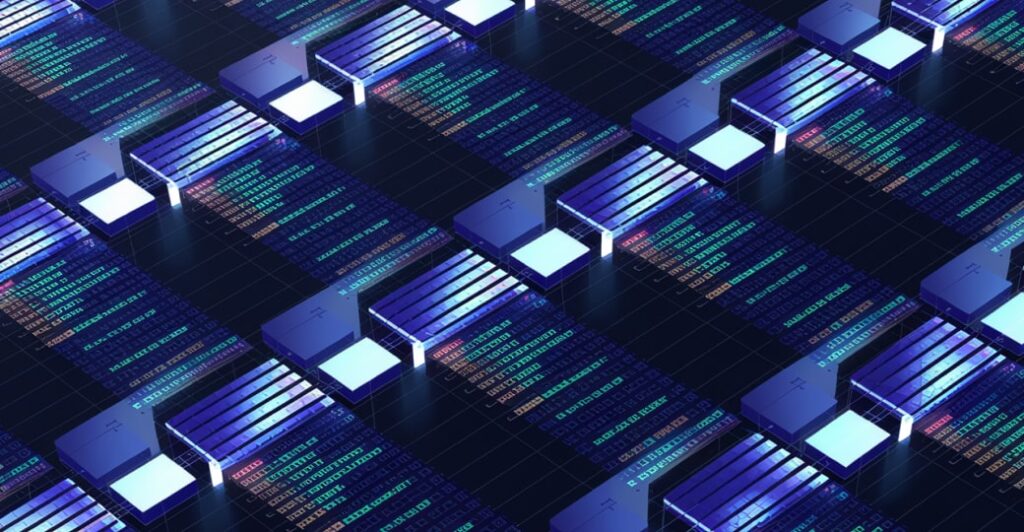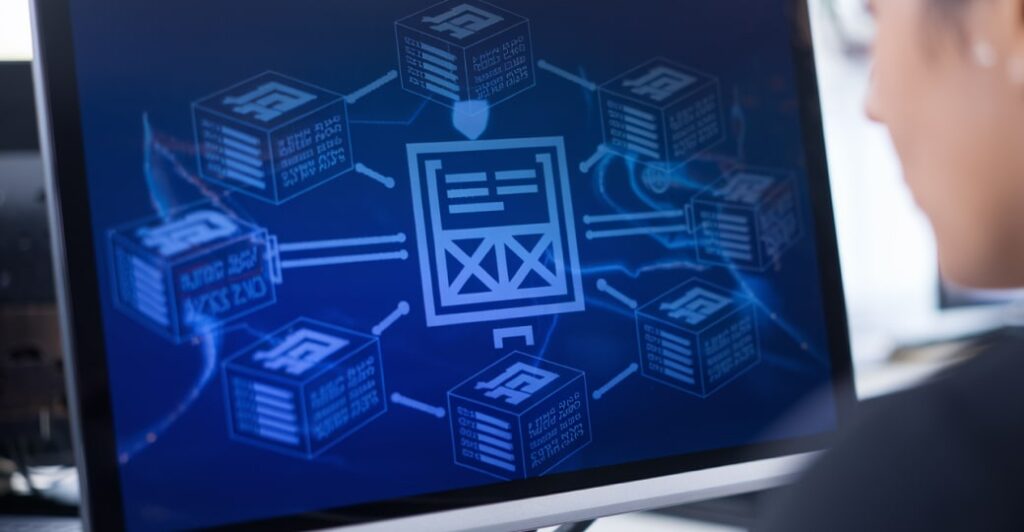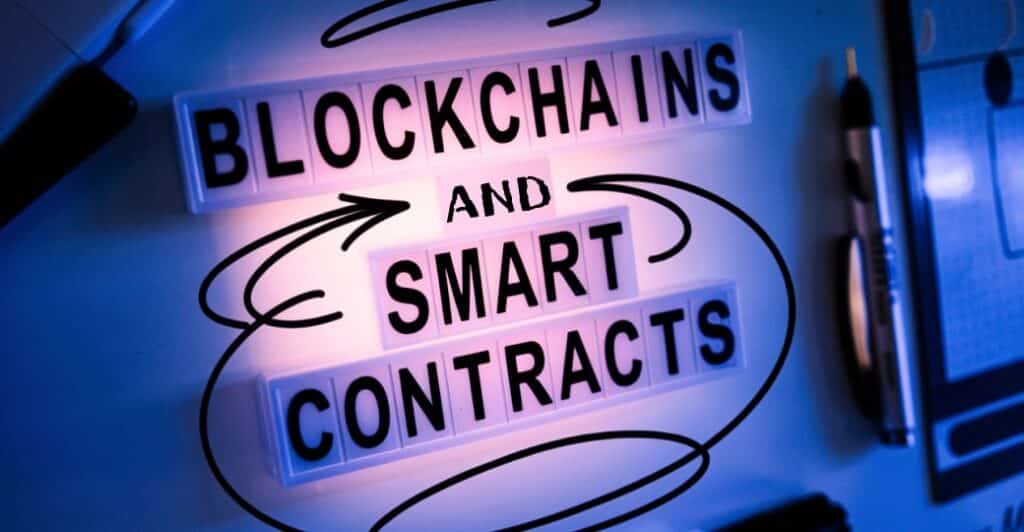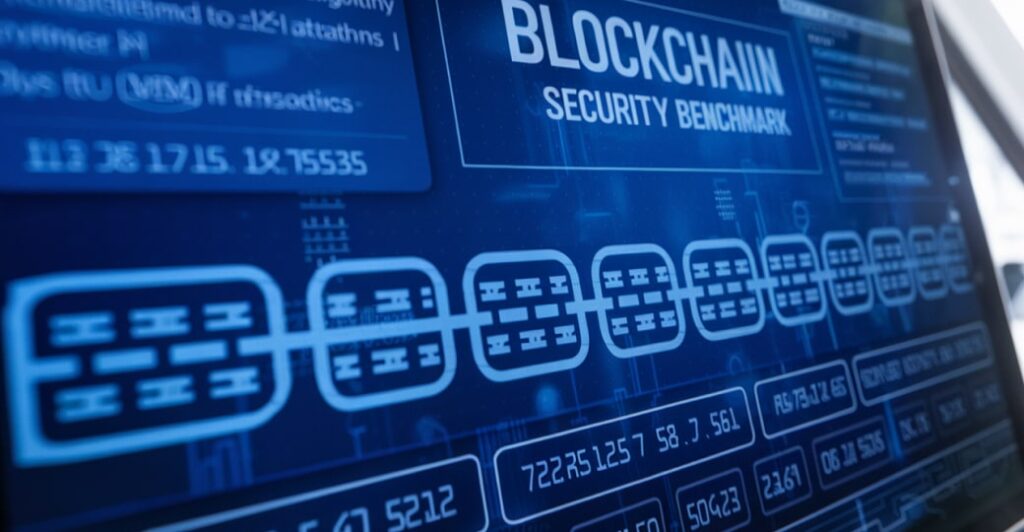The key to a transparent and secure digital future
Decentralization, security and transparency of information technologies are becoming the new standards of digital life. Blockchain technologies, in particular smart contracts, play an important role in this. From financial services to supply chain management and intellectual property protection, these technologies are changing the way we interact, store information, transfer funds and secure our rights and freedoms.
Understanding how popular blockchains and smart contract programming languages work, their capabilities, issues, and challenges are important for anyone looking to take advantage of today’s decentralized solutions.
In this article, we explore the world of blockchains by looking at their most popular platforms and programming languages, analyzing the advantages and disadvantages, and diving into the security issues that are becoming critical in this rapidly changing environment. We invite you to join us on this journey into blockchains and smart contracts, where we will reveal the latest trends, innovations and predictions for these exciting technologies.
The most popular modern blockchains with smart contracts

Many modern blockchains have or are implementing support for smart contracts. Even Bitcoin, which does not support complex smart contracts in its core protocol, has inspired several solutions that allow for partial implementation of smart contracts. This is accomplished by using sidechains (e.g., Rootstock and Liquid Network), second layer solutions (e.g., Lightning Network), and new programming languages (e.g., Simplicity). These solutions greatly expand Bitcoin’s ability to execute more complex smart contracts and programmable financial applications. However, let’s focus on more traditional blockchains for smart contracts.
Ethereum is a pioneer in the world of smart contracts, launched in 2015. This blockchain revolutionized the cryptocurrency industry by introducing the concept of programmable money. Ethereum uses Solidity as the main programming language for creating smart contracts, allowing developers to build decentralized applications (DApps) of varying complexity. Since switching to Proof-of-Stake in 2022, Ethereum has significantly improved its energy efficiency. Despite scalability issues and high fees, Ethereum remains a leader in decentralized finance (DeFi) and NFT with the largest ecosystem of developers and projects.
Binance Smart Chain (BSC) was created in 2020 as an alternative to Ethereum with lower fees and faster transaction speeds. BSC uses a modified Proof of Staked Authority consensus mechanism that combines elements of Proof-of-Stake and Proof-of-Authority. Compatibility with the Ethereum Virtual Machine makes it easy to port projects from Ethereum to BSC. Accordingly, BSC also uses Solidity as the primary programming language for smart contracts and supports Ethereum-compatible tools and environments. While BSC has been criticized for a certain level of centralization, it has become popular among users due to its low fees and fast transactions, especially in the DeFi and GameFi areas.
Solana is a high-performance blockchain launched in 2020. It is known for its extremely high throughput, which can theoretically reach 65,000 transactions per second. Solana supports the Rust and C programming languages for developing smart contracts. This allows developers to utilize the high-performance capabilities of the network. Solana utilizes a unique Proof of History consensus mechanism combined with Proof-of-Stake to achieve high speed without compromising on security. Development on Solana is done primarily in the Rust language. This has attracted many developers. Solana has faced network stability issues, leading to several instances of downtime.
Cardano, launched in 2017, is characterized by its scientific approach to blockchain development. The project was founded by one of the co-founders of Ethereum, Charles Hoskinson. Cardano uses its own consensus mechanism, Ouroboros, which is a variant of Proof-of-Stake. A feature of Cardano is its phased approach to development, where each stage undergoes rigorous academic peer review. Smart contracts on Cardano are written in the Plutus language. Although Cardano’s development is slower compared to other projects, its backers appreciate its methodical approach to security and stability.
Polkadot is an innovative project launched in 2020 that seeks to create an ecosystem of interconnected blockchains. Polkadot’s architecture is based on a relay chain to which parachains – specialized blockchains with their own functions and tokens — are connected. Polkadot uses the Nominated Proof-of-Stake consensus mechanism and allows cross-chain communication between different blockchains. This architecture provides greater flexibility and scalability, allowing for the creation of specialized blockchains for specific needs while maintaining the ability to interoperate with other networks. Polkadot does not support a specific programming language for smart contracts directly, but instead uses the Substrate framework, which allows developers to use Rust to create specialized blockchains and parachains.
Avalanche is a powerful smart contracts platform launching in 2020. Its uniqueness lies in its architecture of three interconnected blockchains: the X-Chain for asset management, the C-Chain for smart contracts (compatible with Ethereum Virtual Machine), and the P-Chain for coordinating validators and creating sub-networks. Avalanche uses an innovative consensus protocol that enables high transaction speeds and scalability. Of particular interest is the ability to create custom sub-networks, which allows developers to customize rules, commissions, and tokenization to meet specific project needs. This flexibility makes Avalanche attractive for a wide range of decentralized applications, from DeFi to games to enterprise solutions. The main programming language for smart contracts on Avalanche is Solidity, which is compatible with the Ethereum Virtual Machine, making it easy to port smart contracts from Ethereum.
Tezos, launched in 2018, is characterized by its ability to self-update. This means that the blockchain can evolve and introduce new features without the need for hard forks that often lead to community splits. Tezos uses the Liquid Proof-of-Stake consensus mechanism, which allows token holders to delegate their validation rights to other participants. For smart contracts, Tezos uses the Michelson language, which focuses on formal verification – the mathematical proof of correctness of programs. This makes Tezos particularly attractive for financial applications and other systems where security is critical. The project is also known for its active developer community and regular protocol updates.
Algorand, created by cryptographer Silvio Micali in 2019, is a blockchain that seeks to solve the blockchain trilemma (security, decentralization, scalability) through an innovative Pure Proof-of-Stake approach. This mechanism randomly and secretly selects validators for each new blockchain, providing high security and decentralization while maintaining high transaction speeds. Algorand uses its own smart contract language, TEAL, and supports development in Python and JavaScript via SDK. The project focuses on building infrastructure for the financial services of the future, including central bank digital currencies (CBDCs) and asset tokenization.
Cosmos, launching in 2019, is often referred to as the “Internet of Blockchains.” It aims to create an ecosystem of interconnected but independent blockchains. At the core of Cosmos is Tendermint, a Byzantine Fault Tolerant consensus mechanism that provides high performance and instant transaction finalization. The Cosmos SDK allows developers to easily create custom blockchains that can communicate with each other via the Inter-Blockchain Communication protocol (IBC). This opens up a wide range of possibilities for creating specialized blockchains that can exchange data and value. Cosmos is actively used to create decentralized exchanges, payment systems and other complex ecosystems. The Cosmos SDK allows developers to create blockchains using the Go language.
NEAR Protocol, launched in 2020, positions itself as a platform for building and deploying decentralized applications with a focus on usability for both developers and end users. NEAR utilizes sharding to achieve high scalability, allowing the network to process more transactions in parallel. Nightshade’s unique consensus mechanism achieves high throughput without compromising security. NEAR supports smart contracts in Rust and Assembly Script, making development more accessible to a wide range of programmers. NEAR pays special attention to user experience, offering features such as clear account names instead of long addresses and the ability to pay commissions for users in some cases.
The most popular smart contract programming languages

Choosing a smart contracts programming language is important for developing reliable and efficient decentralized applications. Each language has its own features, advantages and applications. This makes them more or less suitable for specific blockchain platforms and project types. From the widely used Solidity to specialized languages such as Plutus or Michelson, developers have a variety of tools at their disposal to create smart contracts.
In this section, we will take a look at the most popular programming languages for developing smart contracts, their key features and applications. This will help both novice and experienced developers understand which language is best suited for their projects, taking into account factors such as security, performance, usability, and compatibility with various blockchain platforms.
Solidity is an object-oriented programming language designed specifically for Ethereum. It is the most popular language for creating smart contracts. Solidity’s syntax resembles JavaScript, making it relatively easy for web developers to learn. Solidity supports inheritance, libraries, and complex custom types. It is used not only in Ethereum, but also in many EVM-compliant blockchains.
Vyper is a contract-oriented programming language for Ethereum that is derived from Python. It is designed with a focus on security and ease of auditing. Vyper intentionally has fewer features than Solidity to reduce the possibility of bugs and vulnerabilities in smart contracts.
Rust is used to develop smart contracts in blockchains such as Solana, Cosmos, and NEAR Protocol. It is a system programming language that focuses on security, concurrency, and performance. Rust has a powerful type of system and memory management. This helps prevent many common programming errors.
Haskell is a pure functional programming language used to develop smart contracts in some blockchain platforms, notably Cardano (via Plutus). Haskell is known for its strong static typing, “lazy” computation, and elegant syntax. In the context of smart contracts, Haskell enables the creation of highly reliable mathematically verified programs, which are particularly valuable for financial and mission-critical applications.
Plutus is a programming language for smart contracts in the Cardano blockchain. It is based on Haskell, a functional programming language. Plutus enables the creation of robust mathematically provable smart contracts, which is especially important for financial applications.
Michelson is a low-level stack programming language for smart contracts on the Tezos blockchain. It is designed to facilitate the formal verification of contracts. While Michelson can be difficult to use directly, there are high-level languages such as LIGO that compile into Michelson.
Go (or Golang) is a statically typed programming language that is gaining popularity in developing smart contracts for certain blockchain platforms. For example, Go is used in Hyperledger Fabric, where smart contracts are referred to as “chaincode.” It is also used in projects such as Cosmos SDK and Tendermint. Go is known for its simplicity, efficiency, and built-in support for parallelism. In the context of smart contracts, Go offers a good balance between performance and ease of development, making it attractive for building complex decentralized applications.
Mapping blockchain support for smart-contract programming languages

We sought to create a comprehensive table showing support for the most popular smart-contract programming languages across leading blockchain platforms. Not finding such a table, we decided to develop it ourselves and share it with you. We believe this table is useful because of its clarity in understanding the relationship between the most popular blockchains and the most popular smart contract languages.
Partial support means language support by parachains, sidechains, environments, layers, zones, etc.
| Solidity | Vyper | Rust | Go (Golang) | Haskell / Plutus | Michelson | |
| Ethereum | Yes | Yes | No | No | No | No |
| Binance Smart Chain (BSC) | Yes | Yes | No | No | No | No |
| Solana | Partially | Partially | Yes | No | No | No |
| Cardano | Partially | Partially | Partially | No | Yes | No |
| Polkadot | Partially | Partially | Partially | No | No | No |
| Avalanche | Yes | Yes | No | Partially | No | No |
| Tezos | No | No | No | No | No | Yes |
| Cosmos | Partially | Partially | Yes | Yes | No | No |
| Near Protocol | Partially | Partially | Yes | No | No | No |
We invite all those interested to refine and update this table.
Current Blockchain and Smart Contract Security Challenges

Here are examples of blockchain security issues in three different dimensions: blockchain threats, vulnerabilities in smart contracts, and threats to the ecosystem. We have written more about some of these issues in other articles.
Threats at the blockchain level
These threats can undermine the very foundation of decentralized systems, threatening their integrity and security. The danger of these threats stems from their potential impact on the network as a whole, that is, their ability to compromise the basic principles of blockchain, such as decentralization, transparency, and immutability.
- Attack 51%. Attackers, controlling the majority of computing power, can manipulate transactions.
- Sybil attacks. Creating multiple fake identities to affect the network.
- Attacks on the consensus mechanism. Exploitation of vulnerabilities in consensus algorithms.
- Network-level attacks. Attempts to isolate parts of the network or manipulate routing.
Smart contract vulnerabilities
These vulnerabilities reflect the variety of attack vectors against smart contracts, from exploitation of technical features of programming languages to manipulation of business logic. Such incidents are particularly dangerous because they can lead to significant financial losses and undermine trust in decentralized applications.
- Vulnerability to Reentrancy attacks. Unpredictable behavior due to repeated contract invocations.
- Overflow and anti-overflow of integers. Unexpected results of arithmetic operations.
- Front-running. Abuse of information about future transactions.
- Errors in logic. Improper implementation of the business logic of smart contract algorithms.
- Flaws in access control. Unauthorized actions due to incorrect user rights settings.
- Lack of randomization. Exploitation of predictable generation of “random” (pseudo-random) numbers.
- Vulnerability to gas attacks. Maliciously running out of gas to block operation.
- Problems with temporary locks. Risk of blocking funds due to incorrect timing constraints.
Threats to the ecosystem
The threats listed below reflect the complexity of today’s blockchain ecosystems and demonstrate how vulnerabilities in a single component can have a cascading effect on the entire system. Covers a wide range of risks, from data manipulation and economic attacks to social engineering and scaling issues.
- Oracle attacks. Manipulation of external data sources.
- Privacy attacks. Analyzing public transactions to identify sensitive information.
- Attacks via dependencies. Exploiting vulnerabilities in external libraries.
- Flash credit attacks. Manipulation using instant loans.
- Social engineering in DeFi. Manipulation of users to take unfavorable actions.
- Attacks on inter-chain bridges. Exploitation of vulnerabilities in blockchain communication protocols.
- Manipulation of MEVs. Abuse of the ability to influence the order of transactions.
- Attacks on governance mechanisms. Manipulation of decentralized governance systems.
- Economic attacks on stablecoins. Destabilization of the rate of algorithmic stablecoins.
- Attacks specific to Layer 2. Vulnerabilities in scaling solutions.
Criteria and methods for evaluating the security of blockchains and smart contracts

As information security technologies evolve, they are primarily expressed in the form of defined evaluation methods and security criteria. Evaluation methods are ways of determining the level of security, and criteria are the characteristics of that level that result from the application of those methods. A detailed description of these methods and criteria, as well as their relationship, would require separate articles. We list some of the criteria and methods for assessing the security of blockchains and smart contracts below.
Criteria for blockchain security
The above criteria define the reliability and resilience of the system. These criteria are the most high-level criteria. They cover the most important aspects of a blockchain, from its underlying architecture to its ability to withstand external threats.
- Decentralization. The degree to which control is distributed among network participants.
- Consensus mechanism. The efficiency and security of the consensus algorithm.
- Cryptographic robustness. Reliability of the cryptographic algorithms used.
- Scalability. The ability of the network to handle an increasing number of transactions.
- Resistance to attacks. Protection against 51% attacks, Sybil attacks, etc.
Methods for assessing blockchain security
These methods provide examples of an integrated approach to identifying potential vulnerabilities and assessing the overall reliability of the system. These methods are highly effective in identifying a wide range of security issues, from software bugs to system flaws.
- Source code analysis. Verification of protocol implementation and cryptographic algorithms.
- Network simulations. Testing blockchain behavior in various scenarios.
- Stress testing. Performance evaluation under high load.
- Node security auditing. Software security audits of network nodes.
- Analyzing attack history. Examining previous security incidents in similar blockchains.
Methods for assessing the security of smart contracts
The methods listed below are tools and approaches to identify and address actual and potential vulnerabilities in smart contracts. Utilizing these methods can help ensure that smart contracts have a high level of reliability and security before they are deployed in a real blockchain environment.
- Static code analysis. Automated search for typical vulnerabilities.
- Dynamic analysis. Contract testing in a test network.
- Formal verification. Mathematical proof of correctness of operation.
- Manual audit. Expert analysis by experienced specialists.
- Fuzzing testing. Generation of non-standard and random input data for error detection.
Managing Blockchain and Smart Contract Security

Developing a blockchain is much more complex than developing a smart contract for it. These types of developments are fundamentally different. However, in addition to compatibility requirements, there are common stages in the development of blockchains and smart contracts related to security requirements. Let’s describe these stages and our role in them.
Designing Secure Blockchains and Smart Contracts
At this stage, it is important to consider potential threats and vulnerabilities in order to avoid them in the future. Our experts use advanced risk analysis and modeling methods to create secure architectures. They analyze requirements, assess risks and create a blockchain and smart contract security design that provides maximum protection from potential threats.
Implementation: From Concept to Reality
Our team of specialists accompanies the process of implementing blockchain solutions and smart contracts, ensuring that all security aspects laid down at the design stage are implemented properly. We use proven methodologies and tools for secure integration into the existing infrastructure. By applying industry best practices and standards, we ensure the reliability of your smart contracts and blockchain solutions.
Audit and Certification: Independent Assessment
We conduct a thorough audit of blockchain systems and smart contracts, identifying vulnerabilities and weaknesses in their implementation. Our certification process confirms that solutions comply with industry security standards and best practices. Our auditors perform a detailed analysis of code and systems to ensure that they meet the highest security standards.
Monitoring: Constant Vigilance
Our monitoring systems operate 24/7, tracking anomalies and potential threats in real time. This allows us to quickly respond to incidents and prevent possible attacks on blockchains and smart contracts.
Support: Always in Touch
We provide ongoing technical support, helping clients resolve security issues that arise during the operation of blockchain systems and smart contracts.
Incident Investigation: Rapid Response
In the event of a security incident involving blockchains or smart contracts, our team of experts conducts a detailed investigation to identify the causes and ensure their immediate elimination. We develop recommendations to prevent similar situations in the future, using techniques that minimize the consequences and prevent their recurrence.
Blockchain Security Benchmark

This table presents a comparative analysis of leading blockchain platforms in terms of their security and reliability. The purpose of the analysis is to evaluate and compare various security aspects that are critical for the functioning and development of blockchain networks.
The selected blockchains represent the most popular and technologically advanced platforms in the cryptocurrency and decentralized application market as of 2024.
The selected evaluation criteria are popular for evaluating and comparing blockchain systems:
- Consensus mechanism — determines the way the network achieves agreement.
- Attack resistance — evaluates the network’s ability to withstand various types of cyberattacks.
- Security history — takes into account past experience and incidents.
- Code audit — evaluates the regularity and quality of program code checks.
- Scalability — determines the network’s ability to grow without losing performance.
- Update management — evaluates the process of implementing changes to the protocol.
Each criterion was assessed based on the analysis of technical documentation, historical data on the functioning of networks, public audit reports and expert assessments of specialists in the field of blockchain technologies.
Rating scale:
- “High”/”Very high” – the best indicator.
- “Average” – satisfactory indicator.
- “Good”/”Excellent” – a positive assessment that varies in degree.
- “New” (for security history) — insufficient data due to a short period of existence.
- “Mixed” – the presence of both positive and negative factors.
The data for the analysis were obtained from official sources of projects, scientific publications and reports of independent audit companies.
The analysis was conducted in the first quarter of 2024. It is worth noting that due to the complexity of the criteria and evaluation methods, some of its results may be somewhat subjective. Also, the characteristics of blockchains may change over time due to the development of technologies and the implementation of updates.
| Blockchain | Consensus Mechanism | Attack Resistance | Security History | Code Audit | Scalability | Patch Management |
| Ethereum | PoW/PoS | High | Good | Regular | Moderate | Good |
| Polkadot | NPoS | High | New | Regular | High | Great |
| Cosmos | PoS | Moderate | Good | Varies | High | Good |
| Solana | PoH+PoS | High | Mixed | Regular | Very high | Good |
| Cardano | PoS | High | Good | Regular | Moderate | Great |
| Avalanche | PoS | High | New | Regular | High | Good |
| BSC | PoSA | Moderate | Mixed | Regular | High | Good |
| Near | PoS | High | New | Regular | High | Good |
| Tezos | PoS | High | Good | Integrated/Regular | Moderate | Great |
Comparative Analysis of Smart Contract Programming Languages in Terms of Security

The developed table presents a comparative analysis of six popular programming languages for developing smart contracts in terms of their security. The analysis is based on expert assessments and existing research in the field of blockchain technologies.
The security criteria were selected taking into account the specific challenges that smart contracts face:
- Type safety is the ability of the language to prevent errors related to data types.
- Overflow protection is resistance to attacks that exploit arithmetic overflow.
- Access control is the ability of the language to implement reliable authorization mechanisms.
- Replay protection is built-in tools to prevent repeated execution of transactions.
- Ease of auditing is how amenable is the code in this language to analysis and verification.
The assessment was carried out on a three-level scale (Low, Medium, High) based on the analysis of language documentation, known cases of vulnerability exploitation, and expert opinions in the developer community.
The choice of languages is due to their prevalence in the development of smart contracts on various blockchain platforms.
It is important to note that this assessment is generalized and may vary depending on the specific implementation and additional security measures taken by developers.
| Language | Type security | Overflow protection | Access control | Replay protection | Ease of auditing |
| Solidity | Moderate | Low | Moderate | Moderate | Moderate |
| Vyper | High | High | High | High | High |
| Rust | High | High | High | Moderate | Moderate |
| Go (Golang) | Moderate | Moderate | Moderate | Moderate | High |
| Haskell / Plutus | High | High | High | High | Moderate |
| Michelson | High | High | High | High | Low |
The result of this analysis helps developers and project managers evaluate the potential risks and benefits of different languages when choosing tools for smart contract development. However, it is recommended to conduct additional research and consult with us before making final decisions.
Real-life examples of smart contract audits
DX25 smart contract audit for Tacans
Our experts conducted a smart contract audit for the DX25 platform at the request of Tacans Labs. The audit used a combination of manual and automated methods to comprehensively identify potential vulnerabilities. As a result, several vulnerabilities were found, including the absence of certain checks and unnecessary argument passing. Audit report.
Smart contract audit for Concordex
The smart contract audit for Concordex, conducted by H-X Technologies, showed the importance of thorough analysis before implementing contracts. The Concordex platform uses smart contracts to manage transactions and provide liquidity. The audit identified critical vulnerabilities such as Reentrancy attacks, incorrect validation of input data, and vulnerability to overflow attacks. Recommendations were given for their elimination to improve platform security. Audit report.
Expert opinion: blockchain security trends and forecasts

Our smart contract audit experts, based on many years of experience and market analysis, have identified the main key trends and forecasts for the development of blockchain security. These trends reflect not only the current state of the industry, but also its development directions in the coming years.
Integration of blockchain with traditional financial systems
In recent years, standardized APIs and protocols for secure interaction of blockchain systems with existing banking and payment systems have been continuously developed. Hybrid systems will appear that combine the advantages of blockchain (transparency, immutability) with the scalability and maturity of traditional database technologies.
The use of smart contracts in corporate processes will grow, especially in the field of supply chain management, intellectual property rights and financial transactions. This will significantly reduce the risk of human errors, speed up transactions and increase the transparency of business processes.
Finally, blockchain, in particular stablecoins, will be used to speed up and reduce the cost of interbank transactions. Traditional financial instruments (stocks, bonds) will increasingly be presented as tokens in the blockchain. New rules will be adopted to legalize and regulate the use of blockchain in the financial sector.
Transparency vs Privacy
Regulators around the world are paying more and more attention to the security of blockchain projects and their compliance with standards and regulations. Companies will be forced to approach security issues even more carefully to comply with new regulatory requirements. The development and popularization of industry standards for auditing smart contracts is expected, which will improve the quality of checks and trust in the results.
New technologies are being developed to ensure the confidentiality of transactions in blockchain networks. The demand for solutions that ensure anonymity and privacy of users is expected to grow. Experts expect that in the coming years, depending on the ratio of regulators’ activity and attackers, more than half of all blockchain transactions will use privacy-enhancing technologies, including anonymous cryptocurrencies and crypto mixers. In the article at this link, we examined in sufficient detail the legal and ethical issues of transparency and privacy of cryptocurrencies.
Evolution of Attack and Defense Methods
The growing popularity of DeFi is leading to an increase in the number of attacks on these platforms. Auditing and securing smart contracts in DeFi is becoming a priority for blockchain security companies. Our cases represent only a small part of the projects in this area. The smart contract auditing services market is expected to triple by 2026.
Hackers are constantly improving their methods, developing increasingly complex attacks on blockchain systems. Companies are investing in constantly updating their defense mechanisms and conducting regular security audits. It is predicted that by 2027, the number of successful attacks on blockchains will decrease by 40% due to improved security methods.
Blockchain is a less mature technology than other IT, and therefore its cybersecurity is at an early stage. If we analyze general IT, in recent decades, in absolute terms, the number of cybercrime has been growing, but relative to the overall volume of the IT economy, it has been falling. Therefore, it is quite logical to assume that blockchain will repeat the fate of general IT.
Technology forecasts
The development of inter-blockchain bridge technologies creates new challenges for security. The development of secure protocols for inter-blockchain interaction is becoming critical. Experts predict that by 2028, standardized security protocols for inter-blockchain interaction will be developed.
Blockchain technologies allow the creation of secure private systems for managing digital identity. This industry opens up new opportunities for protecting personal data, but also creates new challenges for security. It is predicted that by 2030, decentralized identification systems will become the standard for many online services.
Transparent secure governance systems are becoming a key factor in trusting blockchain projects. Particular attention is paid to the development and audit of smart contracts for DAOs (decentralized autonomous organizations). Experts expect that by 2029, most large blockchain projects will implement improved governance mechanisms with an increased level of security.
Despite widespread concerns about the threat of quantum computing to existing cryptographic methods, progress in this area remains limited. Our experts believe that a real threat from quantum computers is not possible in the short term. However, the development of quantum-resistant algorithms is expected to remain on the agenda as blockchain projects strive to ensure long-term security. Therefore, quantum-resistant algorithms are more a sign of the foresight of project owners than an urgent need.
Workforce Forecasts
The shortage of qualified blockchain security professionals is becoming increasingly noticeable. Companies are actively investing in training and attracting talent to strengthen security teams. By 2028, the number of certified blockchain security professionals is expected to increase fivefold compared to 2023.
Artificial intelligence is actively used to automate audit processes and identify vulnerabilities in smart contracts. Deeper integration of AI into security processes is predicted, which will increase efficiency and reduce risks. By 2026, more than 80% of large blockchain projects are expected to implement automated security monitoring systems based on AI. This will require a radical retraining of personnel in information security and programming.
Our company is at the forefront of these changes, constantly investing in the development of expertise and innovative technologies for auditing smart contracts. We understand that security is not just a service, but the foundation of trust in the blockchain world.
By investing in security today, you ensure the stability and success of your project tomorrow. Our team of experts is ready to become your trusted partner in creating a secure future on the blockchain.
Contact us today to find out how we can help protect your blockchain project and smart contracts from current and future threats. Together, we are building a secure decentralized future!
Free Automatic and Expert Manual Audit

Thank you for taking the time to read through our comprehensive analysis, and we want to give you truly unique opportunities for this, which will raise the security of your smart contracts and other blockchain solutions to the world level.
Free automatic audit: fast and effective
Our free automatic audit tool is your first step to smart contract security. Just paste your contract code on our website scau.pro, and in a matter of seconds you will receive a detailed report on potential vulnerabilities and errors. This tool is ideal for such cases:
- Quick check for common vulnerabilities
- Regular security monitoring of your contract versions
- Preliminary analysis before a more in-depth manual audit
Save your time — check your smart contract right now!
Expert manual audit: deep analysis and individual approach.
For mission-critical projects and complex smart contracts, we offer in-depth manual audit by our highly qualified experts. This service includes:
- Detailed analysis of the smart contract code and logic, its environment and related systems
- Identification of complex and hidden vulnerabilities
- Recommendations for optimization and security improvement
- A detailed confidential report describing all audit results
- A shortened public audit report and a security certificate
- A personal consultation with our specialists
Protect your smart contracts. Use our free automatic audit scau.pro right now or contact us for a free consultation or order an in-depth manual audit.
Your security is our concern!
